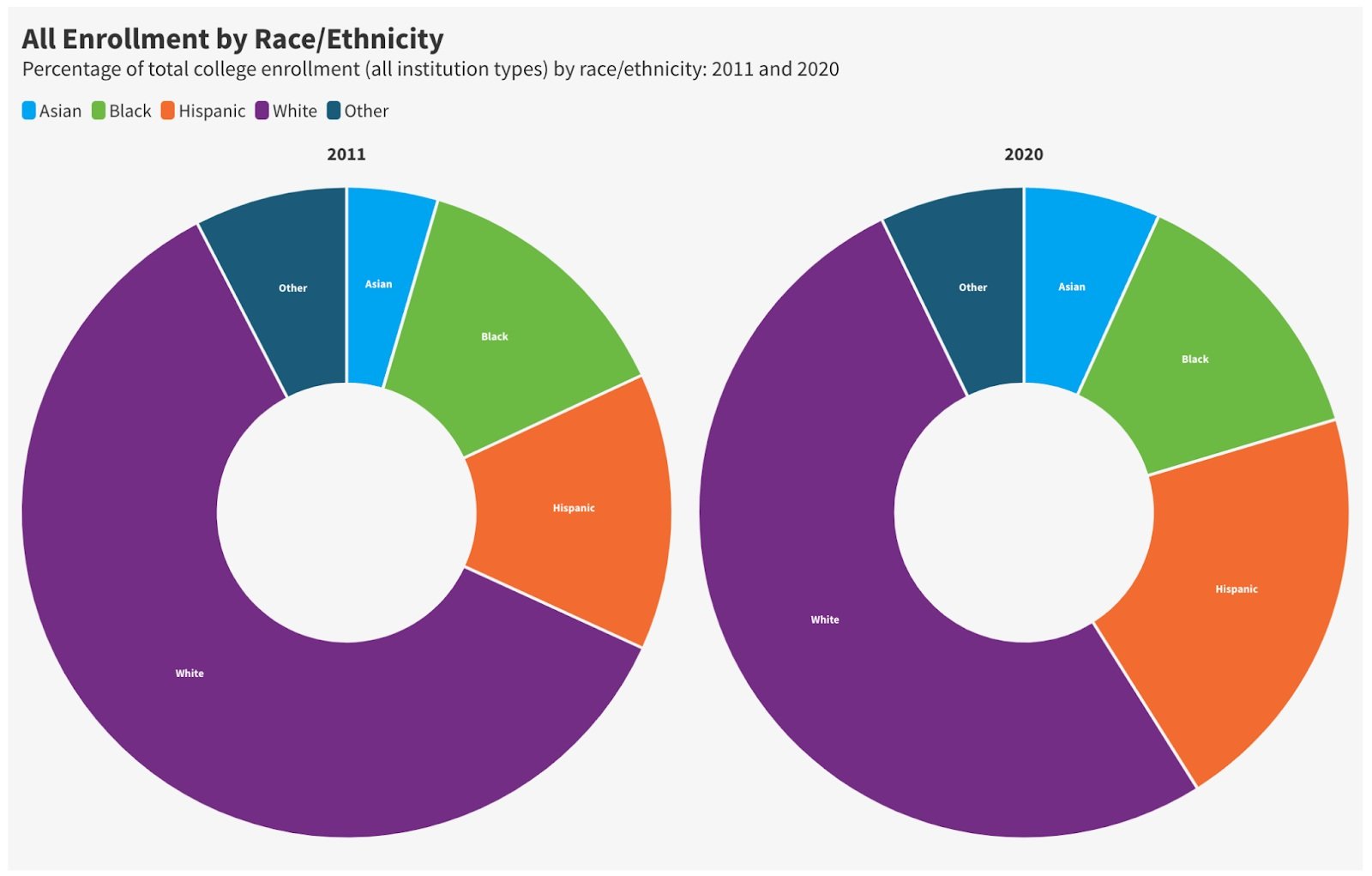Highlighting Diversity in Your College Applications
By Brooks Imel
Background
On June 29, 2023 the Supreme Court ruled, in a 6-3 decision, that the practice of race-based affirmative action in college admissions is unconstitutional. What this means is that colleges and universities can no longer use race as a factor when deciding whether to admit a student.
This decision overturns several decades of legal precedent, beginning with the Court’s decision in the famous 1978 “Bakke” case (“Regents of the University of California v. Bakke”). In that case, the Supreme Court ruled that the use of racial quotas was unconstitutional, but permitted the use of race as one of many factors in a holistic review of an applicant. Many universities in the U.S. have since practiced this kind of affirmative action: using a student’s race as one among many factors for admission decisions. And this has been an important tool for universities trying to build diverse campus communities–boosting enrollment of underrepresented minority groups in the process.
The recent Supreme Court case combined two cases from lower courts: Students for Fair Admissions v. Harvard and Students for Fair Admissions v. University of North Carolina. In both cases, the plaintiffs argued that affirmative action violates the Equal Protection Clause of the 14th Amendment. In particular, lawyers for Students for Fair Admissions argued that Asian Americans’ 14th Amendment rights were violated by making it more difficult for them to be admitted to Harvard and UNC than for other minority groups.
Credit: National Student Clearinghouse DEI Data Lab 2023
What it Means
College admissions offices that once practiced race-based affirmative action will have to change their admissions processes in the aftermath of the Supreme Court’s ruling. It’s impossible to know, for sure, how the ruling will affect racial diversity on these campuses or how it will affect the likelihood of admission for individual students from underrepresented minority groups.
That said, nine states currently have their own bans on the use of affirmative action in college and university admissions, and Texas banned affirmative action from 1996 until 2003, so it is possible to glean some sense of how this might play out by observing historical enrollment data from these ten states.
A recent study by the Chronicle of Higher Education found that, after banning affirmative action, the overall college enrollment of underrepresented minority groups declined in five out of the ten states, stayed the same in two, and increased in three. But the overall decline in enrollment was more pronounced when looking at the flagship universities in each of these states: in 9 out of 10, enrollment of underrepresented minority students declined in the aftermath of affirmative action bans.
This data, however, doesn’t necessarily mean that the same trends will occur now at schools like Harvard and UNC. It’s possible that new admissions policies could achieve racial diversity without the use of race-based affirmative action. Some researchers have suggested that affirmative action based upon socioeconomic status (SES), for example, could achieve even greater racial diversity than we saw under race-based affirmative action.
Learning from others’ very different lived experiences is important in college.
Highlighting Diversity in Your Application
Chief Justice John Roberts included an important caveat in his majority opinion, stating that the decision should not be understood to preclude “universities from considering an applicant’s discussion of how race affected his or her life, be it through discrimination, inspiration, or otherwise.”
It will be important, therefore, for students from diverse backgrounds to highlight their diversity in college applications. These students should think deeply about how their backgrounds have influenced them personally in ways they could meaningfully include in their applications–in essays, supplementary materials, or even in recommendations from teachers and school counselors.
College admissions officers are tasked with building small communities, and having a wide variety of perspectives and experiences makes the community stronger and more interesting. Diversity enriches campus life for everyone. With this in mind, all students should think about what makes them unique–how they would add to the diversity of a student body. This might be related to how your race has affected your life, but it could also be related to a host of other aspects of your life up to now.
A boy with one parent from Germany and another from Korea, who grew up playing the violin and the gayageum, could write a very interesting essay about how his passion for music brought him closer to the two very different cultures of his parents. A girl who grew up on a dairy farm in rural Oklahoma, helping out with daily tasks before and after school, could share insights about how this experience shaped her character. Both of these examples highlight unique backgrounds and experiences, which yield unique perspectives–and that’s precisely what colleges want in an incoming freshman class.
Connecting with Admissions Offices
U.S. colleges and universities actively seek to enroll “first generation” college students– students who are the first in their family to attend college. The recruitment of such students could become even more prevalent now that race-based affirmative action has been banned, as colleges look for new ways to increase diversity on campus. First generation students should make sure that this is highlighted in their applications, and they should also reach out to admissions offices. In addition to actively recruiting such students, admissions offices will likely be able to connect them with specific resources that can help support first-gen students in the application process.
In addition to the likelihood that colleges will increase outreach to first generation students, It’s also very likely that universities will aggressively increase their outreach efforts to underrepresented minority students. Many admissions offices already have permanent organizations within them that are devoted to diversity outreach (for example, UVA’s “Outreach Office”). Some colleges also offer Fly-In programs that pay transportation expenses and provide on-campus food and lodging to encourage students with diverse backgrounds to learn more about their programs and apply. Expect more colleges to create such initiatives, and colleges that already have them to supercharge such efforts. In the process of applying, it will be important for students and their counselors to connect with these organizations.
The Supreme Court’s decision on affirmative action has introduced a great deal of uncertainty. But it’s important for students to know that, while universities are bound to comply with the letter of the law, they are still very much committed to diversity.


